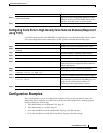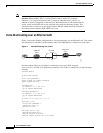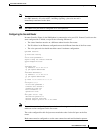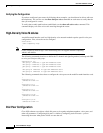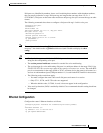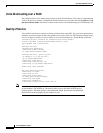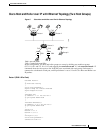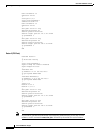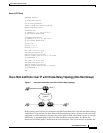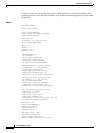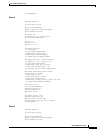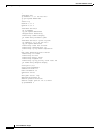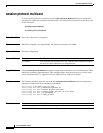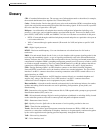
Cisco Hoot and Holler over IP
Configuration Examples
25
Cisco IOS Release 12.1(5)T
Router-3 (FXO Ports)
hostname Router-3
!
ip multicast-routing
!
voice class permanent 1
signal timing oos timeout disabled
signal keepalive 65535
!
interface Vif1
ip address 3.3.3.3 255.255.255.0
ip pim sparse-dense-mode
!
interface Ethernet0/0
ip address 1.5.13.3 255.255.255.0
ip pim sparse-dense-mode
!
router rip
network 3.3.3.0
network 1.5.13.0
!
dial-peer voice 111 voip
destination-pattern 111
session protocol multicast
session target ipv4:237.111.0.111:22222
ip precedence 5
!
dial-peer voice 112 voip
destination-pattern 112
session protocol multicast
session target ipv4:239.194.0.10:22224
ip precedence 5
!
end
Cisco Hoot and Holler over IP with Frame-Relay Topology (One Hoot Group)
Figure 6 Cisco Hoot and Holler over IP with Frame-Relay Topology
In this topology, three routers are connected using 64K Frame-Relay PVCs in a hub and spoke topology,
with Router 1 being the hub. We have defined one hoot and holler group. All three routers have been
configured to traffic-shape their data and voice on the WAN to CIR, and all three routers are using IP
RTP priority to guarantee QoS for the Cisco Hoot and Holler over IP packets. In addition, the
frame-relay broadcast-queue is disabled on the serial interfaces. This occurs because, by default, the
Router 2
Router 1
Router 3
35838
IP multicast
network



